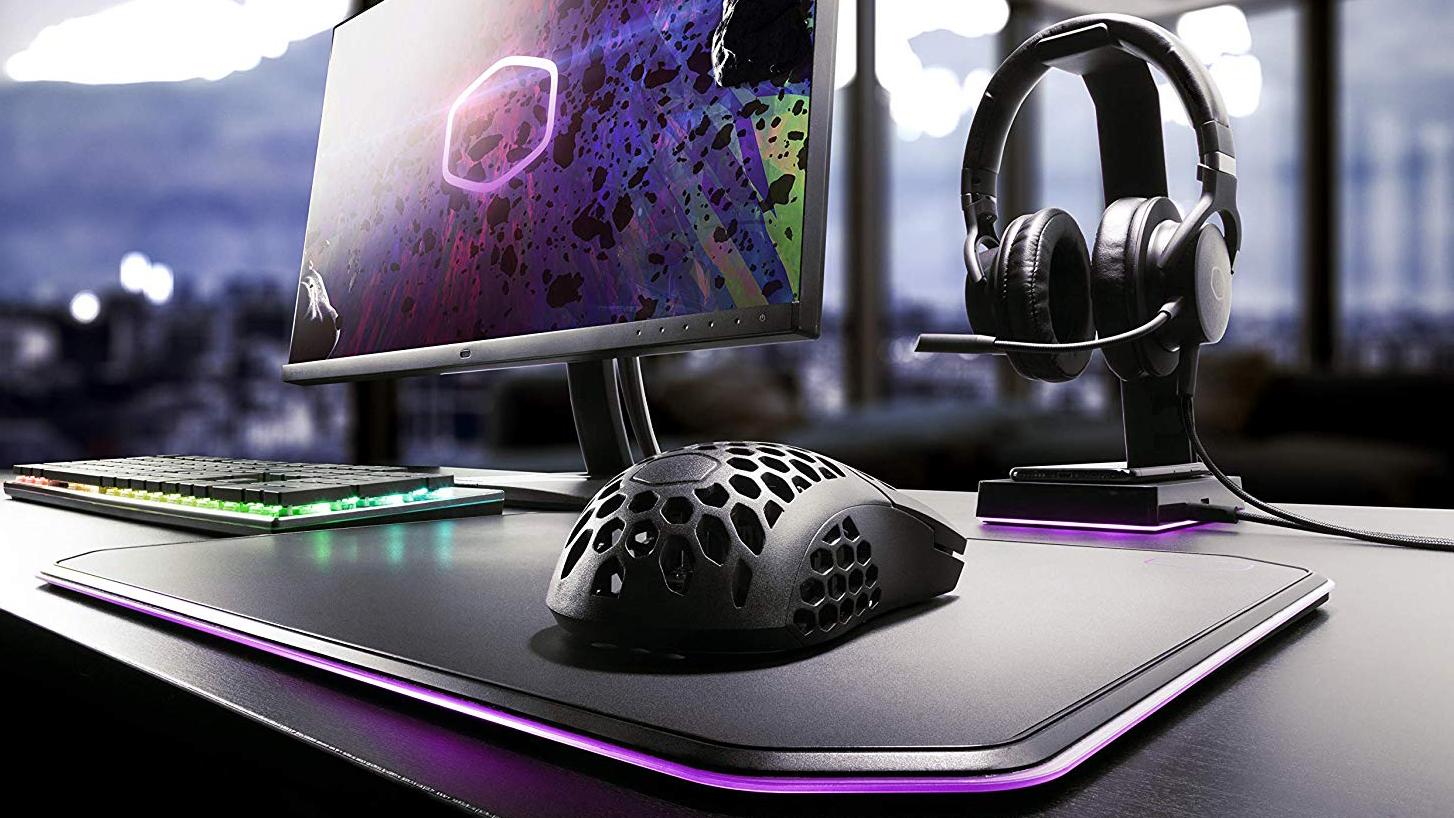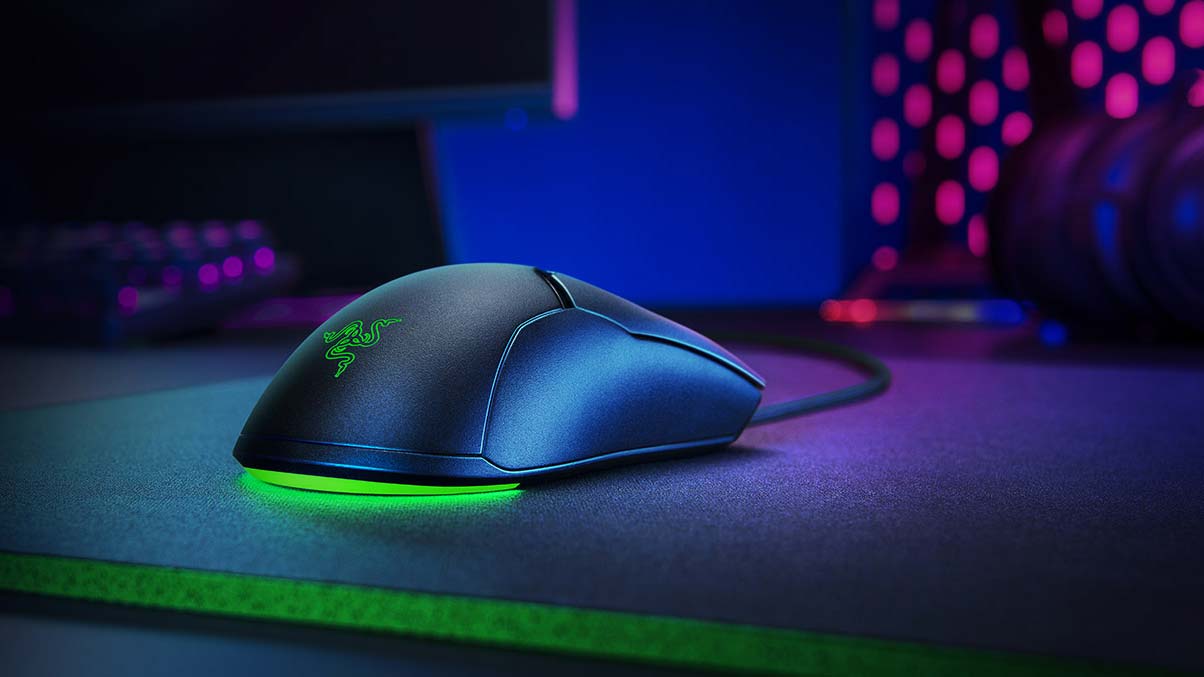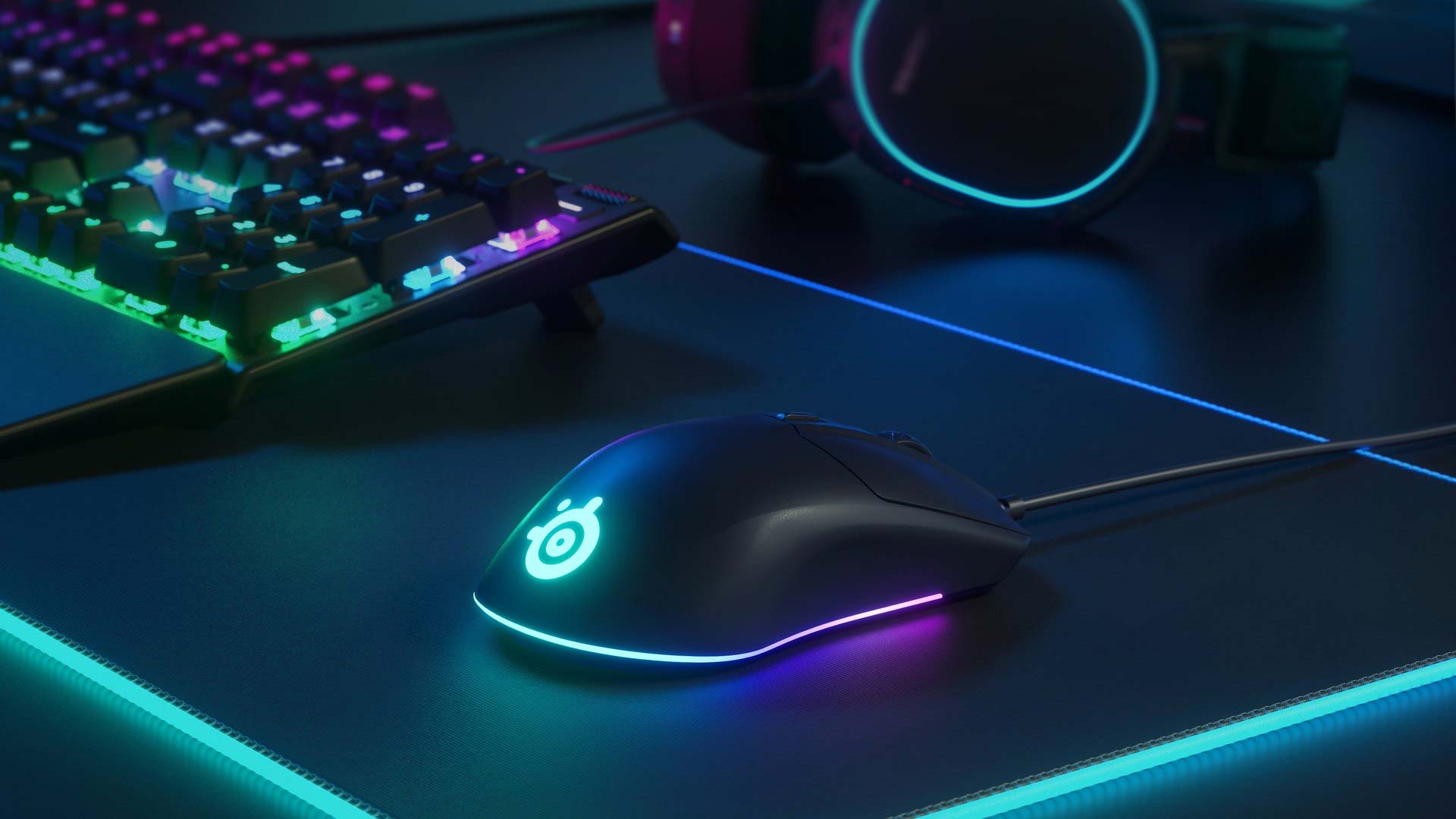Razer and Steelseries explain why gaming’s next big trend is ultra-lightweight mice
Lightweight gaming mice are small, cheap and effective

Back in January, I reviewed an extremely unusual mouse called the Cooler Master MM710. I called it “the ugliest mouse I have ever reviewed,” and I stand by that. The mouse’s insubstantial honeycomb design didn’t do it any favors, but I respected what the mouse was going for. The goal of the MM710 was to jettison all excess weight and provide players, particularly those in competitive esports, with the lightest mouse possible.
At the time, I figured it was a one-off design. But then another ultra-lightweight mouse showed up on my desk. And another. I realized that unlike the hefty, feature-rich gaming mice that were in vogue only a year ago, light and sleek is the new trend, especially when it comes to mice for esports competitors.
While I wasn’t a huge fan of the MM710, I have nothing but nice things to say about the SteelSeries Rival 3 and the Razer Viper Mini, both of which compress comfortable grips and attractive lighting into tiny, inexpensive and quite lightweight packages. If lighter gaming mice are really the way of the future, they have a lot going for them — even from the perspective of someone who usually enjoys huge, heavy mice.
I imagine we’re going to see more lightweight mice in the near future, and I wanted to learn why. So I got in touch with the designers behind the Rival 3 and the Viper Mini to learn about these innovative peripherals firsthand.
The advantages of lightweight mice
First off, I should point out that ultra-lightweight mice are still a relatively new innovation, so there’s no standardized language around them yet. The MM710 is the lightest of the bunch at 1.9 ounces, then the Viper Mini at 2.2 ounces, and the Rival 3 at 2.7 ounces. For the moment, then, let’s say that an ultra-lightweight mouse should weigh less than three ounces. Compare and contrast: Mice with tunable weights, like the Logitech G502, can range up to 5.6 ounces — more than twice as much as the heaviest lightweight mouse.
My first question was, why create such a light mouse? Is this something for which gamers were clamoring, or did the companies foresee that demand would arise if they created a supply? According to Razer, it’s all about how quickly players want to move their mice.
“Making lightweight mice can generally help users execute larger, faster flicks far more accurately,” a Razer representative told Tom’s Guide. “This is most commonly observed with players who game on lower DPI sensitivities, like in FPS games where precision is most crucial.”
Get instant access to breaking news, the hottest reviews, great deals and helpful tips.

SteelSeries employed a slightly different approach in creating the Rival 3. One big concern for the Danish peripheral manufacturer was price. Indeed, the Rival 3 costs $10 less than the Viper Mini; both mice are about half the price of a premium gaming mouse.
“With the Rival 3, we wanted to show that you can make a lightweight, high quality and full-featured mouse at a price point that didn’t break the bank,” said Jason Christian, senior product manager at SteelSeries.
Both companies agreed that lightweight mice could be especially beneficial for esports players. Reaction speed is arguably the key to victory in titles like Fortnite and League of Legends, and gamers are willing to sacrifice features like extra buttons, ergonomic designs and tunable weights for the lightest, fastest possible peripheral.
“Lightweight mice can reduce fatigue with less weight to move around. It is one step closer to being a true extension of your hand,” said the Razer spokesman. “While it’s designed with enthusiasts and gaming athletes in mind, virtually anyone can benefit from it. In fact, we’ve been reducing weight across the board on our mice — including classics like the Razer Basilisk v2 or the Razer DeathAdder V2.”
Christian’s take was similar: smaller, lighter mice are beneficial for esports, or any game where players need their wrists to move fast. But he also brought up another demographic that I hadn’t considered before: children and young teens.
“Since the emergence of Fortnite, we have seen an increase in gamers with emerging needs,” he said. “For example, as younger gamers are still physically growing, they can take advantage of having a mouse that does not weigh as much.”
Challenges and disadvantages
In both the Viper Mini and the Rival 3, I was impressed by how many features they crammed into small, inexpensive frames. Both mice have RGB lighting, programmable onboard profiles and extra buttons. I asked how each company tackled these challenges without sacrificing build quality. As it turns out, simply ensuring that a mouse in this weight class won’t simply fall apart is something of a challenge.

“Our first challenge was to deliver a smart design that could hold its structural integrity,” said the Razer rep. “The structural design needed to avoid breaking points and eliminate flex areas. To keep some features in the mouse, we also had to redesign their implementation without adding significant weight.”
“We put years into development to make sure we could hit sub-80 grams, while still having high-end left/right clicks, a custom Pixart sensor and the full RGB experience,” said Christian. “Finding the right balance of weight, benefits and the experience. We must evaluate every component of a gaming mouse and often make tough decisions if weight is the goal … Structural integrity is very important as we design mice that can withstand punishment from the most demanding gamers for years.”
One important lesson I learned about lightweight mice is that they simply cannot have every single feature from larger, heavier mice. SteelSeries and Razer both had to make compromises in areas like sensor sensitivity, extra features and ergonomics. In my reviews, I made it clear that these mice are not for everyone. Neither company agreed with me outright, but both acknowledged that lightweight mice can present difficulties that mouse enthusiasts aren’t used to — or at least they can, if companies cut corners during production.

“One crucial item is the quality of the build,” said Christian. “Anyone can say ‘hey, let’s trim off a bunch of weight.’ It’s more important than ever to come up with innovative ways to trim weight without sacrificing quality or regulation passing. This is partially why some mice you see on the market are sold in very small quantities, or specific regions where certifications are not as strict.”
“While lighter mice help in making faster swipes, one of the biggest tradeoffs is at the expense of features and/or durability,” the Razer rep explained when I asked about potential drawbacks. “As a result, we had to design for more, but with less material.”
In other words: Not all lightweight mice are created equal, and if you’re going to invest in one, you should probably stick to the major brands. (The Razer representative didn’t name names, but said that lightweight mice that use honeycomb designs present “significant disadvantages.” In my experience, at least, that’s true.)
The next big trend
After years of big, highly customizable mice, the sudden proliferation of light, small, cheap mice caught me very much by surprise. But in retrospect, it’s evident that consumer tastes shift over time — often cyclically — and companies have already pretty much perfected the “heavy, expensive mouse with tons of bells and whistles” design.
If lightweight mice are in vogue right now, I wanted to know what the next big innovation would be. Granted, neither company knows for absolute certain — if they did, they’d already be working on it — but each one had a slightly different idea about what gamers might want next.
“While there is a desire for lightweight mice, it’s not for everyone,” said the Razer rep. “There is a demand for all ends of the spectrum, and gamers just have more specific needs to be met, which is also reflected in the size and shape variations and broad mice family lineup.”

“Beyond lightweight mice is the opportunity to allow gamers to express personality via gaming gear,” Christian explained. “RGB is a checkbox now, so it’s becoming more about ‘how can one stand out among the pack?’”
In other words, there may not be a “next big thing” in gaming mice, as no single mouse design is right for the majority of players. Gamers want to express themselves, whether that’s through design, feature set, or illumination.
The good news is that if you’ve been waiting to express yourself through an inexpensive lightweight mouse, your time has finally come.

Marshall Honorof was a senior editor for Tom's Guide, overseeing the site's coverage of gaming hardware and software. He comes from a science writing background, having studied paleomammalogy, biological anthropology, and the history of science and technology. After hours, you can find him practicing taekwondo or doing deep dives on classic sci-fi.
